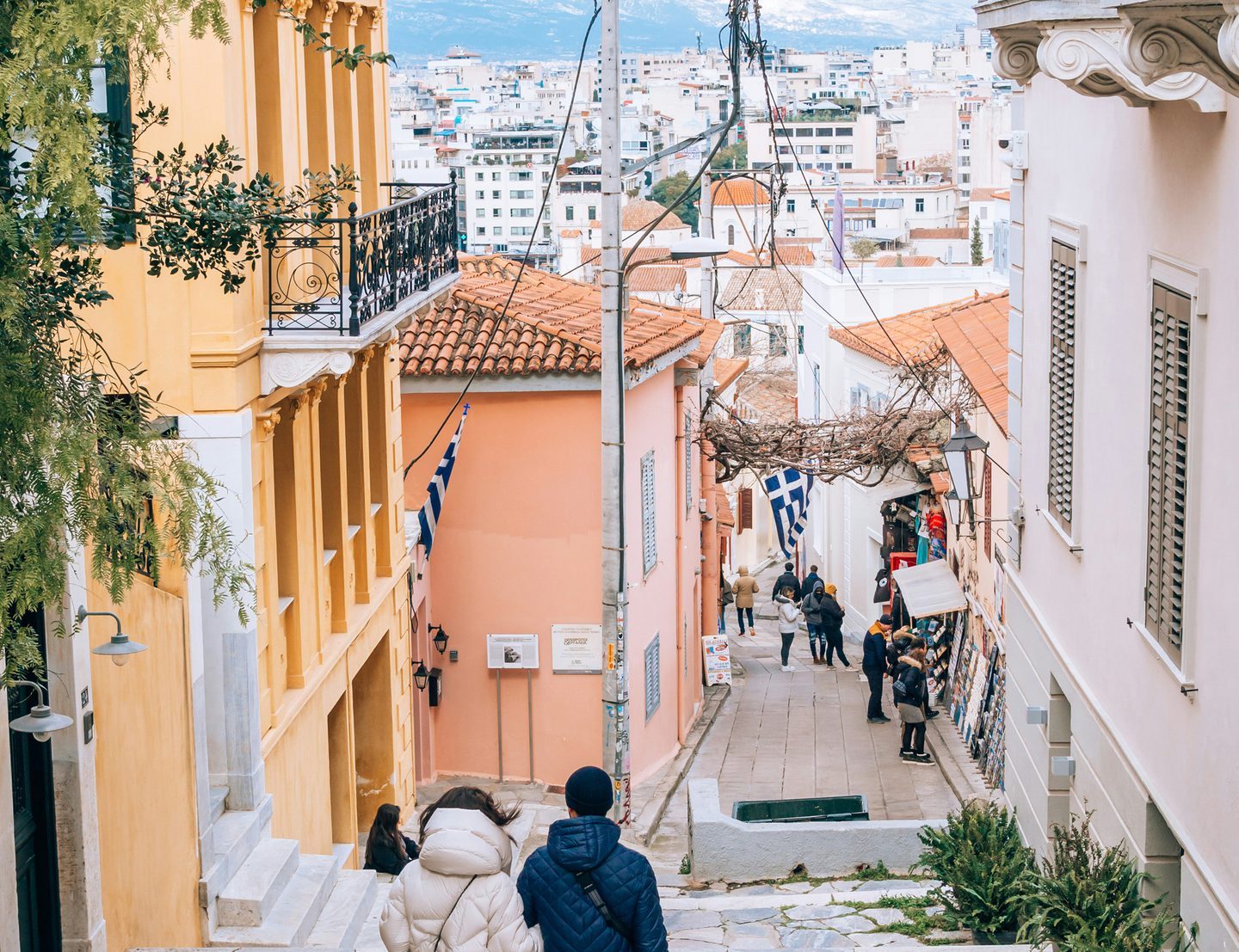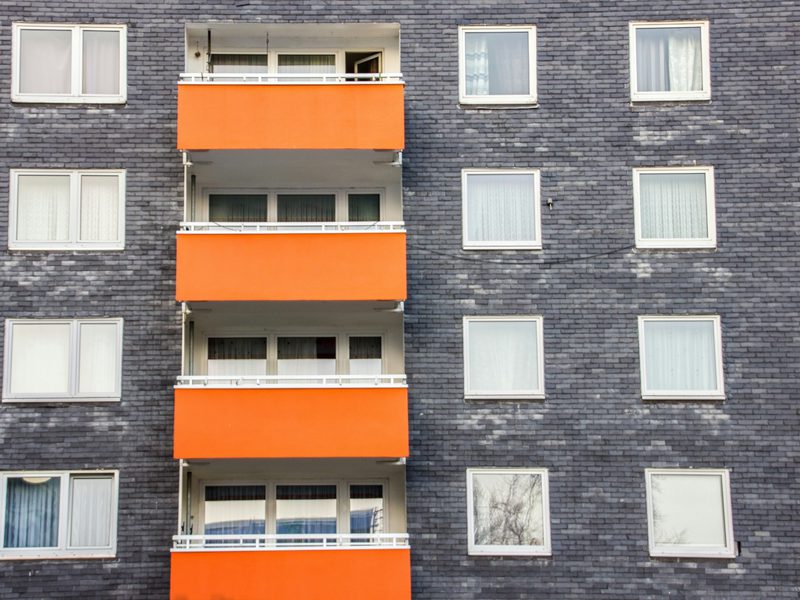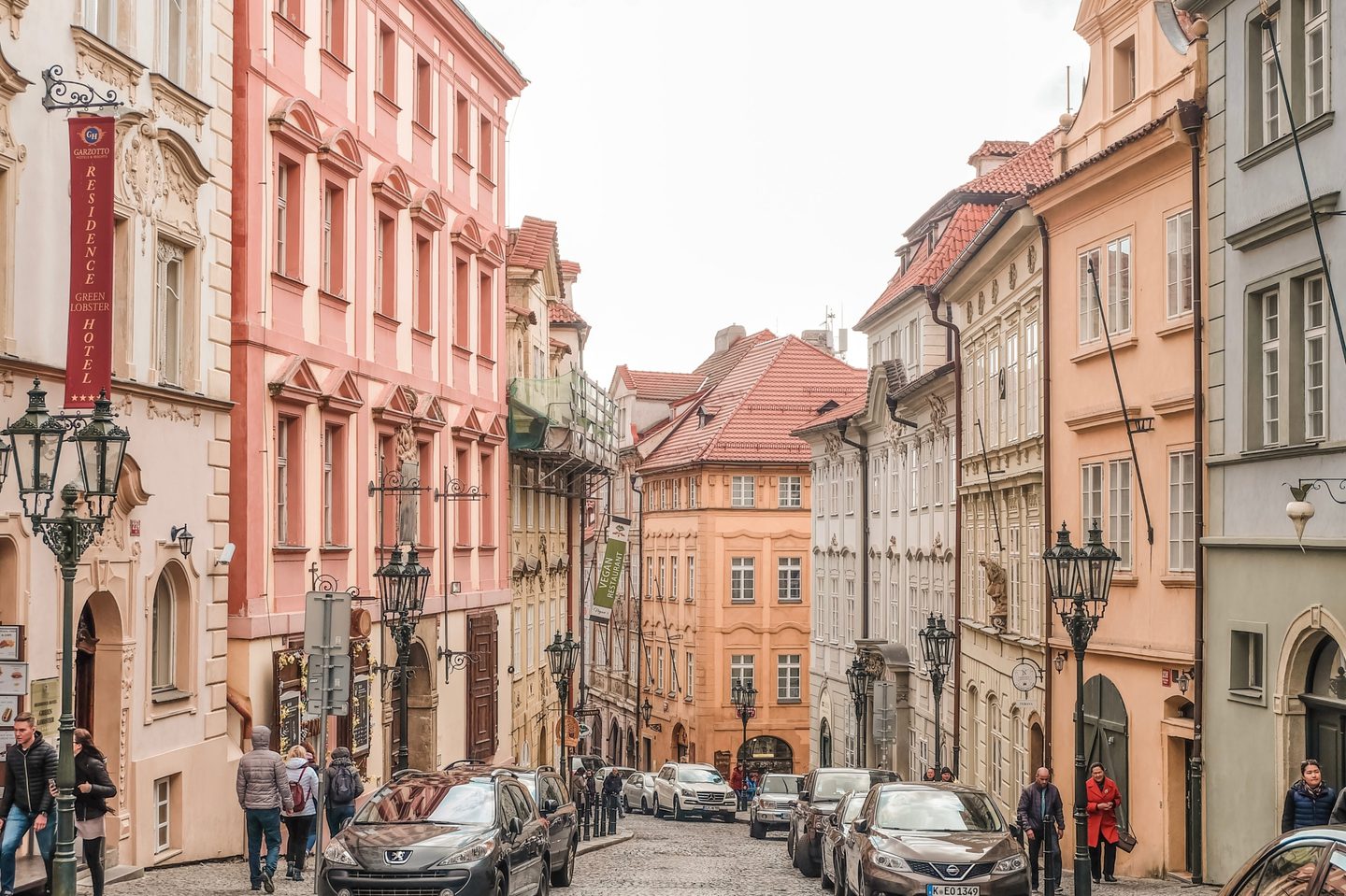City trends
All eight cities face underlying human rights challenges, with varying levels of severity depending, in part, on historical factors and path dependencies. Whilst all have introduced decarbonisation policies, none are moving fast enough to meet current international targets. Some cities, often those that disproportionately contributed to climate change, have moved from policy to implementation, but their emissions remain higher than in many other cities where climate action is in its infancy.
Across all eight cities, the research revealed positive and negative impacts of local and national level climate actions on the human rights of individuals and communities. In cases where decarbonisation strategies have exacerbated inequalities, the result has been visible pushback by communities that do not feel included in the transition, which risks slowing down climate action. Many cities are beginning to move from commitments to action, so there is a tremendous opportunity to build on positive examples of decarbonisation initiatives that respect human rights, and, in doing so, widen support for, and ultimately accelerate, the green transition.

Shared Vision
Given that the meaning of just transition is context-specific, this project engaged with local language, narratives, and perspectives in each of the eight cities to develop an understanding of what justice and transition mean in that context. To achieve this goal, a visioning workshop was organised in each city, with stakeholders across a range of sectors invited to co-create a shared vision for socially-inclusive climate action in their city’s built environment by 2030. The visioning exercise was structured around the following/third research question:
How can we build in a way that does not contribute to climate change, strengthens resilience, and benefits everyone regardless of income, ability, gender, race, or age? What innovative models, strategies, or initiatives are emerging to move towards a more just transition?
The visioning workshops yielded a multiplicity of visions for a just transition in the built environment. These were very different depending on the context, circumstances, and status of the ecological transition in each city or country. It is difficult to join them into a sole, unified, and shared vision for the just transition applicable to all eight cities, yet alone globally, as the meaning and understanding of what is ‘just’ and what is ‘needed’ in each city varies greatly. This exercise underscored that there is not one green transition happening in the world, there are multiple ones happening in different places, at different paces, in different ways, responding to different incentives and disincentives. Nonetheless, it is possible to identify some themes around which there is convergence and divergence.

Convergence
In line with human rights principles, a just transition entails fulfilling everyone’s basic needs, while remaining within the planetary boundary. Dominant extractive urban economic models have proven unable to deliver on this vision, and there’s an urgent need to shift to regenerative models, deeply shaped by the individuals and communities who are most at risk from climate change.
These must acknowledge local and global structural imbalances, and aim to redistribute power, privilege, and opportunity. The right to housing can be the cornerstone of this future, but only if housing and climate policy are integrated to provide adequate, sustainable, and affordable housing for all.
The realisation of this ambitious vision requires deep cross-sectoral collaboration and communication, as solutions developed in silos by government, civil society, or business are likely to leave some people behind. Policymakers must lead the way, by creating frameworks, opportunities, incentives, spaces for social dialogue, and regulations for market transformation. The private sector can then leverage its innovation, resources, and creativity to develop solutions that work for business, people, and the planet. These will require experimentation, particularly for housing, with delivery and ownership models, construction materials, and design approaches that combine local forgotten traditions with emerging technology.
Cities must uphold the rights of nature as well as human rights, regenerating and sustaining biodiversity, increasing green and blue public spaces, and strengthening resilience against the effects of climate change. Renewable energy generation, circular approaches, and urban farming are critical to guaranteeing self-sufficiency while minimising waste and pollution, ensuring that no one is negatively impacted by the transition.
Divergence
The role of foreign investment in creating greener, more equal cities is divisive. Some see it as a crucial economic propeller for the transition, bringing knowledge, innovation, and jobs. For others, it’s an avenue to exacerbate inequality by perpetrating speculation and the extraction of rent and resources.
Unsurprisingly, no silver bullet was identified to tackle housing affordability, the principal issue across the eight cities. Given the range of stakeholders involved and each city’s unique context, radically different approaches were proposed. Debate lines emerged between new builds and retrofits, increasing supply or controlling prices of the existing stock, and whether responsibility principally lies with governments or investors. The climate crisis and planetary boundaries add a further layer of complexity, with calls for whole-life carbon measurements, individual carbon budgets, and conflicting opinions between prioritising the building of new green certified homes or limiting new builds and focusing on refurbishing existing buildings.
Due to complex historical reasons, each city has different priorities and is at a different point on its decarbonisation journey.


Signs of change: emerging innovations
Economic models in real estate have predominantly operated by exploiting materials and energy, in thirst for capital, thus driving a model of rapid linear consumption.
Traditional real estate investment practices have inherently prioritised financial gain over societal and environmental well-being, exacerbating inequality and depleting finite planetary resources.
Hence, this project was also interested in exploring emerging innovations, models, and strategies with the potential for transformational systems change.
A just transition cannot simply replace an extractive carbon economy with a system of green extraction where fundamental power relations remain unchanged. A sustainable and just future requires more fundamental reshaping of economies to produce regenerative systems that address unequal power dynamics head on.
This project ignited the collection of "concrete utopias" – tangible manifestations or expressions of utopian ideals within society. These are not fantastical or distant dreams, but rather practical embodiments of hope and imagination that emerge within existing structures. These initiatives provide a “glimpse of the possible” with the potential to transform the status quo into a new, desired future.
Identified initiatives are being collated in a global map, with selected examples from across the world reported below.


See the full map of emerging innovative models
The models
Pocket parks are small gardens developed in previously unkempt corners of the city’s densely populated neighbourhoods. They were created through the Adopt Your City platform, which fosters partnerships between the Municipality of Athens and companies, associations, or citizens willing to take on the cost of urban improvements. By 2024, ten pocket parks had been created: some examples are the support of the Deloitte Foundation to create a small garden in Kypseli in 2020, or the support of Organization Earth in 2022 to develop another one in Neos Kosmos. These parks improve biodiversity, mitigate against the worsening urban heat island effect, help address loneliness, particularly for older citizens, and even contribute to reducing crime.
Just a Change is a non-profit that brings together volunteers and businesses to retrofit leaky homes. Local agents highlight cases of housing poverty to the organisation’s employees; international businesses like Saint-Gobain, Ikea, and Leroy Merlin provide the materials; and Just a Change deploys young volunteers with construction skills to retrofit the homes. “We rehabilitate houses because we know it brings improvements to public health and energy efficiency in our country. We know that this can be the starting point for a new life.” In addition to warmer homes, this model forges intergenerational connections, equips young people with retrofit skills, and effectively connects international businesses with local needs.
Almost 10% of Prague’s residents live in cooperative housing. In this model, the housing cooperative owns the buildings, and the residents are its members, with their monthly payments granting them the right to use their homes. The model is so popular that the City of Prague is aiming to roll out its own housing co-operative. Sdílené Domy (Shared Homes) was the first Czech cooperative to join MOBA, a network of housing cooperatives across East-Central and South-Eeastern Europe. Concerned about the potential for homes to be sub-let or privatised with some housing cooperative structures, it set itself up as a social cooperative instead, with one vote per resident rather than one vote per housing unit. To purchase its first property, it secured a loan from the German foundation Umverteilen which covered 70% of the cost, with 30% coming from private loans from supporters or future residents, as well as funding from MOBA.
A New Normal is a city plan to transform Greater Melbourne from an energy consumer to an energy producer by 2030. This model targets Melbourne’s water, energy and waste systems to reduce carbon emissions and achieve a “net-zero code” to guide new architecture. The process outlines key initiatives such as mandating the retrofitting of all existing buildings to reduce energy and water consumption, and using energy storage systems to power homes through the electrification of the transport system. The ultimate outcome will see all new construction projects achieving net-positive energy production, water neutrality, and not producing any waste destined for landfill.
KOTAKU is a programme launched by the Ministry of Public Works and Housing which aims to revitalise slum areas by improving neighbourhood infrastructure such as water supply, drainage systems, sanitation, streets, public spaces, and sidewalks, as well as the floors, roofs and walls of substandard homes. This initiative emphasises local value and active community engagement: the government provides funds and facilitators, but each local community develops the programme, including direct involvement in building infrastructure or renovating homes.
Energy communities are grassroots initiatives led by citizens all over Europe, aimed at promoting clean energy adoption and enhancing energy efficiency at the local level. CECs can take various legal forms, including associations, cooperatives, partnerships, non-profit organisations, or limited liability companies. They are backed by EU law and can operate as a unified entity to gain access to energy markets on par with other market players. These communities promote public support for renewable energy projects and facilitate private investments for the clean energy transition. CECs empower citizens to actively participate in the transition process, leading to various benefits such as improved energy efficiency, reduced energy bills, alleviation of energy poverty, and creation of local green job opportunities.
A CLT is a non-profit corporation that holds land on behalf of a place-based community, while serving as the long-term steward for affordable housing, community gardens, civic buildings, commercial spaces, and other community assets on behalf of a community. CLTs are innovative in terms of ownership model, organisation as non-profit landowner, and operation – disadvantaged people have the first claim on a CLT’s resources. This model does not allow real estate speculation, keeping prices affordable and preventing displacement. They also support environmental sustainability, contribute to local economic development, and help preserve cultural identity within communities.
Social Urbanism (SU) is an urban governance model labelledcoined the “Medellín model” in 2008 by the Organization of American States. It is, in large part, the reason for the spectacular urban, social and environmental transformation that occurred in the city since the 2000s. Medellín invested purposefully in the most disadvantaged areas of the city. Investments were not directly in housing (real estate) but in public infrastructure, to provide people with resources that promote and sustain human flourishing: libraries, parks, public transport, sport facilities, community centres, hospitals, and schools. The role of citizenship through education, civics, culture, arts, and sports was also fundamental. From the “Medellín model” of SU, there are five key and intertwined elements that can be discerned: (1) tangible improvements in the built and natural environments, (2) along with social interventions, (3) driven by community-co-created processes, (4) facilitated by effective public institutional management, and (5) an economic model that is sustainable and redistributive.
The city of Kitakyushu has undergone an impressive social and environmental transformation. From being an iron-producing, highly-polluting city, in the early XX Century to being internationally recognised as a “modern leader in green initiatives". The Eco-Town Project in the Wakamatsu-ku Ward in Kitakyushu is the earliest and most complete eco-town in Japan. The project started in 1997 to transform the polluting city of the past into a “resource-recycling-based society” which turns all its waste into resources. In partnership with the Kitakyushu Science and Research Park, the project has also been developing initiatives in education, environmental research, and commercial strategies, to disseminate their learnings as a ‘zero-waste’ model.
Partly due to widespread corruption, land parcels in Kenya can often be sold to two different people, resulting in two separate titles and entries in the land registries. This generates confusion and a lack of confidence in land transactions and ownership. Geographical mapping company GeoDevOps helps people understand the ways that land is owned and used. The organisation hosts Kenya WEBGIS, which provides multiple layers of information such as plot dimensions and ownership in Langata, Nairobi. Surveyors are also able to upload information from their surveys. Chrispine Omondi, Head of GeoDevOps, asserts that transparency about land ownership patterns, especially in this context, is important to help curb corruption and provide clarity for people, government, businesses, and investors.
FNMPC is expanding indigenous participation and control in infrastructure and real estate projects. The First Nations Major Project Coalition is a First Nations group of over 145 elected councils, hereditary Chiefs, Tribal Councils and Development Corporations, who "have made the decision to come together to advance our shared interests of participating, and, where appropriate, gaining equity positions in the major projects [in energy, minerals and real estate] taking place in our territories." This is an example of democratisation of infrastructure - ensuring that the people who live on the land where infrastructure and real estate development takes place have the opportunity to shape projects and benefit from them, and countering the traditional development model in which local communities, particularly indigenous communities, bear the burdens of projects while others reap rewards.

